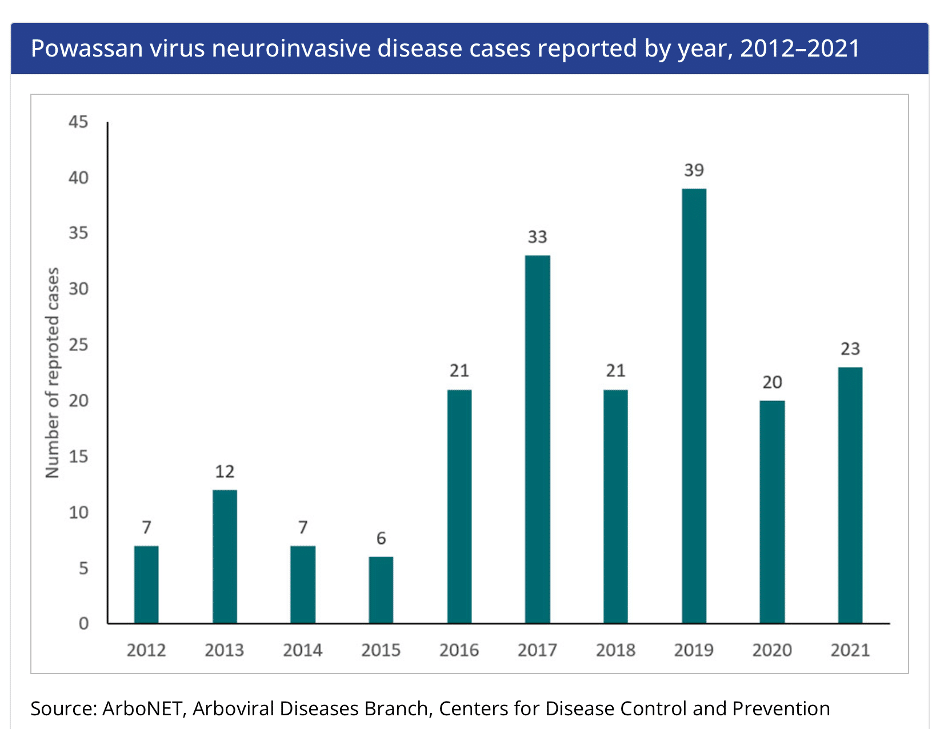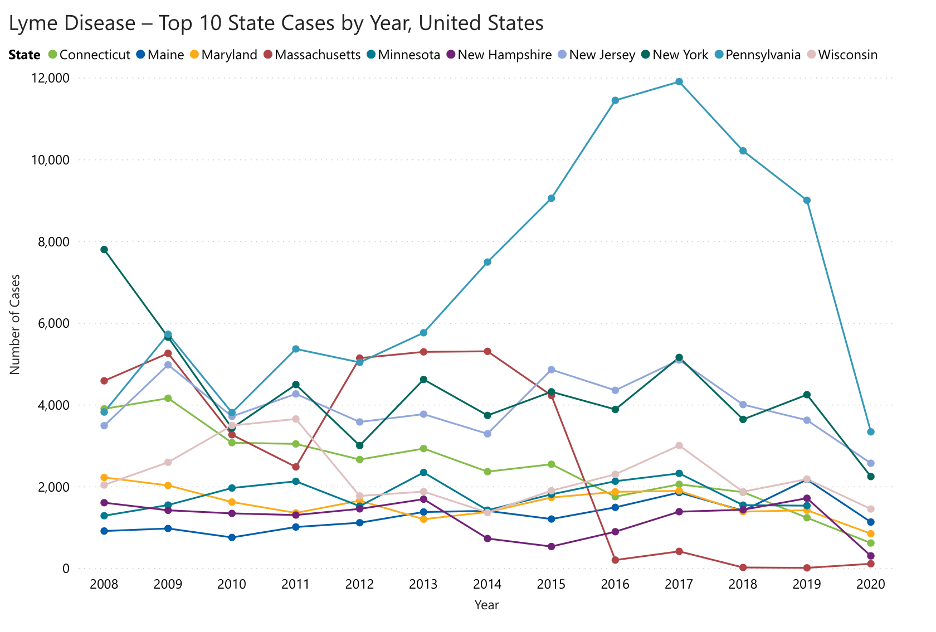By Dr. Carol Hoban
Faculty Member, School of Health Sciences
Note: The CDC-developed graphs and other CDC references to specific commercial products, manufacturers, companies, or trademarks in this article do not constitute endorsement or recommendation by the U.S. Government, the Department of Health and Human Services, or the Centers for Disease Control and Prevention. These graphs are available on the CDC website at no charge.
Summer is right around the corner. As outdoor activities begin to ramp up, so does the incidence of tickborne diseases, such as Lyme disease and Powassan disease.
What Is Lyme Disease and What Are Its Symptoms?
Lyme disease is the most common tickborne disease and is spread by a bite from a black-legged tick. The disease is caused by a bacterium, Borrelia burgdorferi, in an infected tick. In rare cases, Lyme disease can also be acquired from a different bacterium, Borrelia mayonii.
In the United States, tick bites occur starting in the spring months and continuing during the summer and fall. The symptoms of Lyme disease include:
- Headache
- Fever
- Fatigue
- A circular rash (erythema migrans), which resembles a bull’s eye
Related: Recognizing and Preventing Heat-Related Illnesses This Summer
How Is Lyme Disease Treated?
Lyme disease is commonly treated with antibiotics. But if it is left untreated, Lyme disease can grow more serious, spreading to the joints, the heart and even the nervous system.
In some cases, patients may experience Post-Treatment Lyme Disease Syndrome (PTLDS). PTLDS occurs when symptoms like fatigue, pain or mental confusion last for more than six months after a patient has received treatment for Lyme disease.
The exact cause of PTLDS is unknown. But according to the Centers for Disease Control and Prevention (CDC), some experts believe PTLDS is triggered by an autoimmune response, similar to what occurs in patients treated for other infections such as campylobacter and Guillain-Barré syndrome.
According to the CDC, around 30,000 cases of Lyme disease are reported annually. However, the CDC estimates that as many as 476,000 cases of Lyme disease occur each year due to many cases of Lyme disease going unreported.
These maps from the CDC show the number of cases by year and the top 10 states where Lyme disease is found.
Powassan Disease: Rare But Equally Dangerous
Another tick-borne disease that many people are not aware is Powassan disease, also caused by a virus. It is rare, but the incidence of these cases has been increasing in recent years.
The Powassan virus is spread by the bite of an infected tick. The ticks acquire the virus when they feed on groundhogs, squirrels, mice or other rodents that have the virus in their blood.
Powassan disease occurs mainly in the eastern United States. Typically, it is spread by three types of ticks:
- Groundhog tick
- Squirrel tick
- Black-legged tick, also known as the deer tick
Of these ticks, only the deer tick or the black-legged tick generally bite people, similar to Lyme disease.
The symptoms of Powassan disease resemble those of Lyme disease. However, additional symptoms include vomiting.
According to the CDC, contracting the Powassan virus can be serious. It may cause an infection of the brain or the surrounding membranes, resulting in meningitis.
Powassan disease may cause death (one in 10 people with a severe form of it die). It can also result in long-term complications, such as loss of muscle strength and memory issues.
Unfortunately, antibiotics do not treat Powassan disease. If a severe infection occurs, then hospitalization is required to monitor a patient’s swelling of the brain or respiratory problems.

Related: How to Stick with Healthy Habits during Summer Travel
How to Prevent Tickborne Diseases
When you’re outdoors this summer, remember to be careful when you’re hiking, camping or even walking pets in wooded areas. After being outdoors, be sure to promptly check that you have not been bitten by any ticks.
To contract Lyme disease, an infected tick has to be attached to your skin for 36-48 for the virus to spread. Removing any ticks quickly and wearing insect repellant can greatly reduce your chances of becoming infected.
The CDC has a handy reference tool on how to properly remove a tick. It also contains information on testing if you suspect you may have Lyme disease.



Comments are closed.